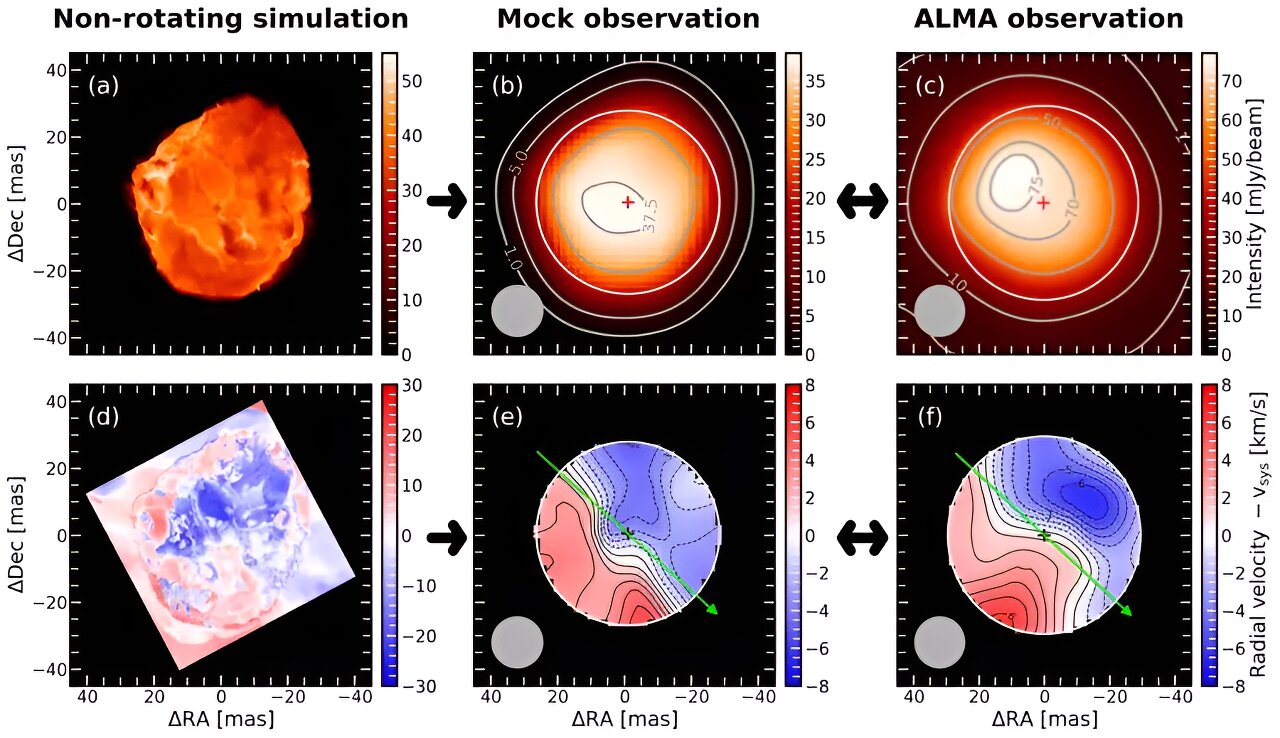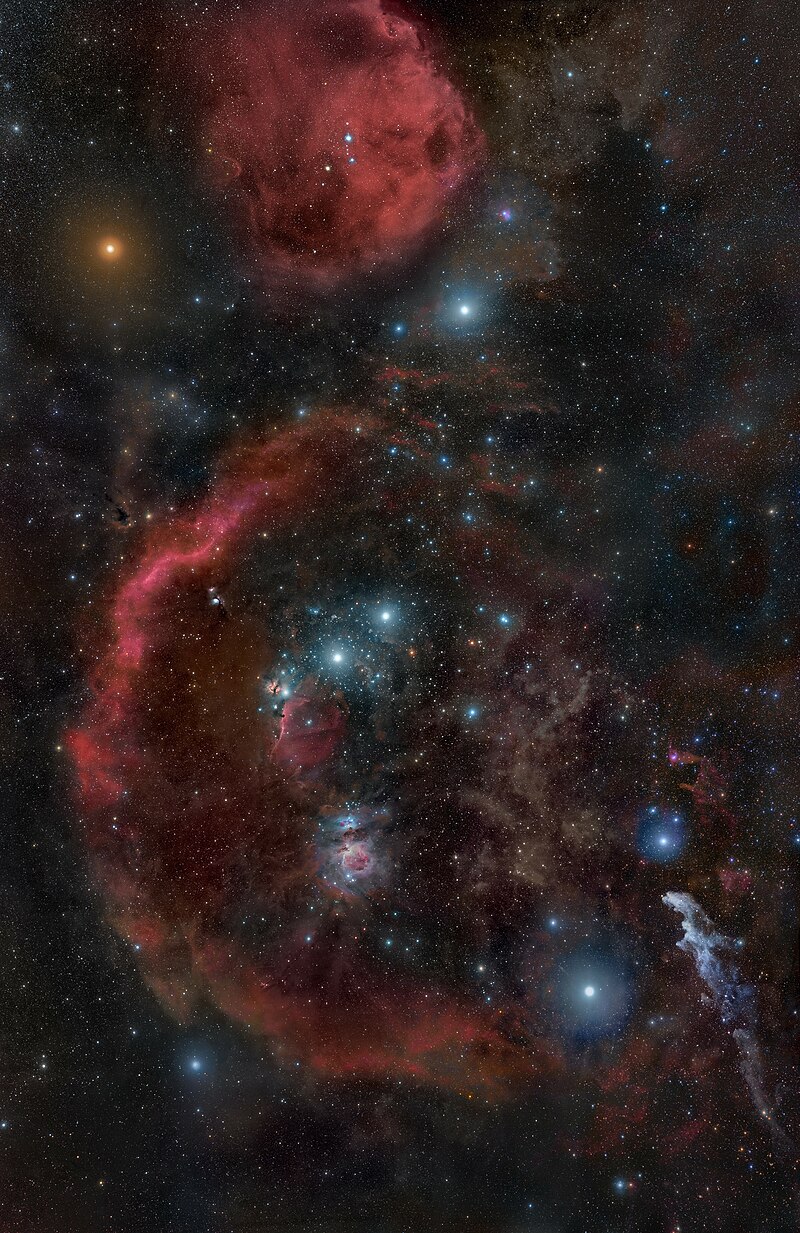Among all the stars in the sky, Betelgeuse is perhaps one of the most mysterious. Betelgeuse, which is located on the left shoulder in the constellation Orion, attracts the attention of astronomers with its characteristic red color. Its size, which is almost 2,000 times the size of the Sun, is really impressive. It is unusual for a star of this size to exhibit a high rotational rate, exceeding the expected one for its evolutionary stage.
Its recently measured rotational rate raises numerous questions. If this star were in the place of the Sun, its photosphere would be in the orbit of Jupiter, and the rotation rate would be 5 km/s. However, the new data hints that the measured rotational rate may be erroneous due to the instability of the star’s surface.
A network of 66 Atacama Large Millimeter Array radio telescopes has determined the rotation rate of Betelgeuse. Astronomers have concluded that the star’s rotation rate is 5 km/s. If Betelgeuse were an ideal sphere, then this would be a reasonable conclusion. But the surface of the red supergiant is not like that at all.

As with all stars, convection is an important process in the photosphere that brings heat from the stellar interior. In the case of Betelgeuse, the convection cells are massive, sometimes even larger than the Earth’s orbit around the Sun, and they rise and fall at a speed of about 30 km/s.
Jing-Ze Ma, PhD, from the Max Planck Institute of Astrophysics, considers the possibility that the velocity map, which detected the movement of approaching and receding hemispheres, can actually fix the convection cells. According to his theory, the limited resolution of the ALMA system actually registered convection cells that rose from one side of the star and fell from the other. To confirm this conclusion, the team of scientists developed a new data processing technique to obtain synthetic data from ALMA – in 90% of cases, the movement of convection turned out to be fuzzy, which led to a misinterpretation of high rotational rates.

To test this theory, repeated observations of the star were carried out in 2022. But the data is still being analyzed. The new results are expected to reveal new details about the nature of Betelgeuse.
Read how scientists joke about the Betelgeuse explosion.
According to phys.org
Follow us on Twitter to get the most interesting space news in time
https://twitter.comne/ust_magazine


